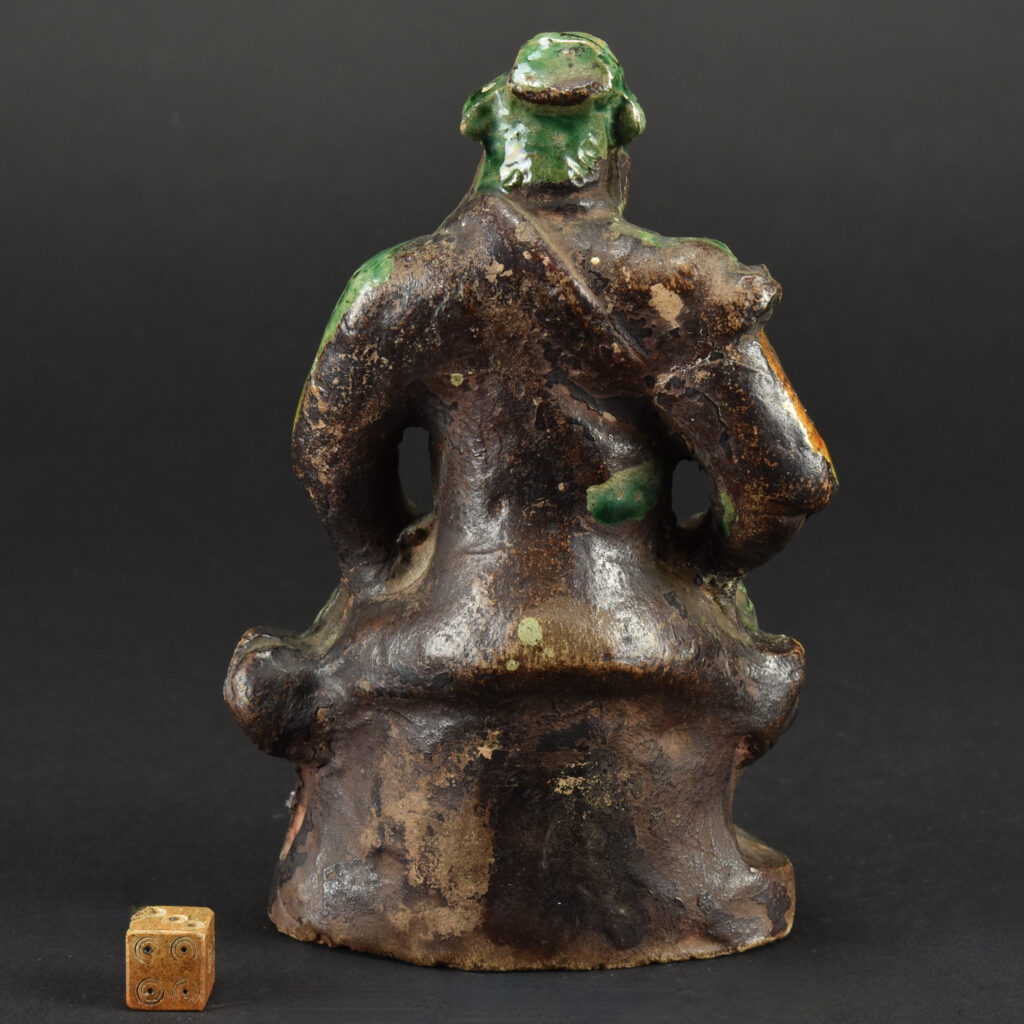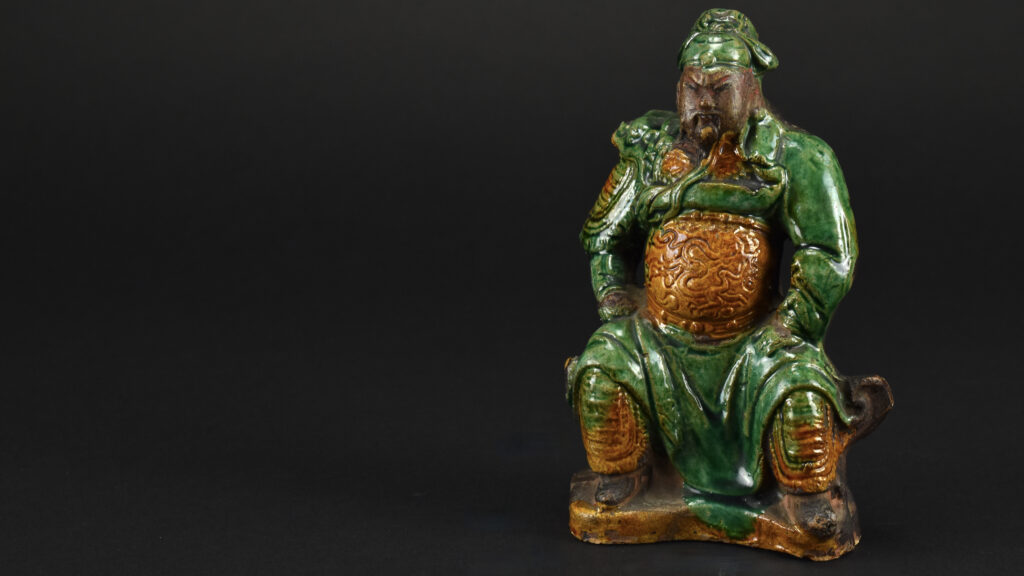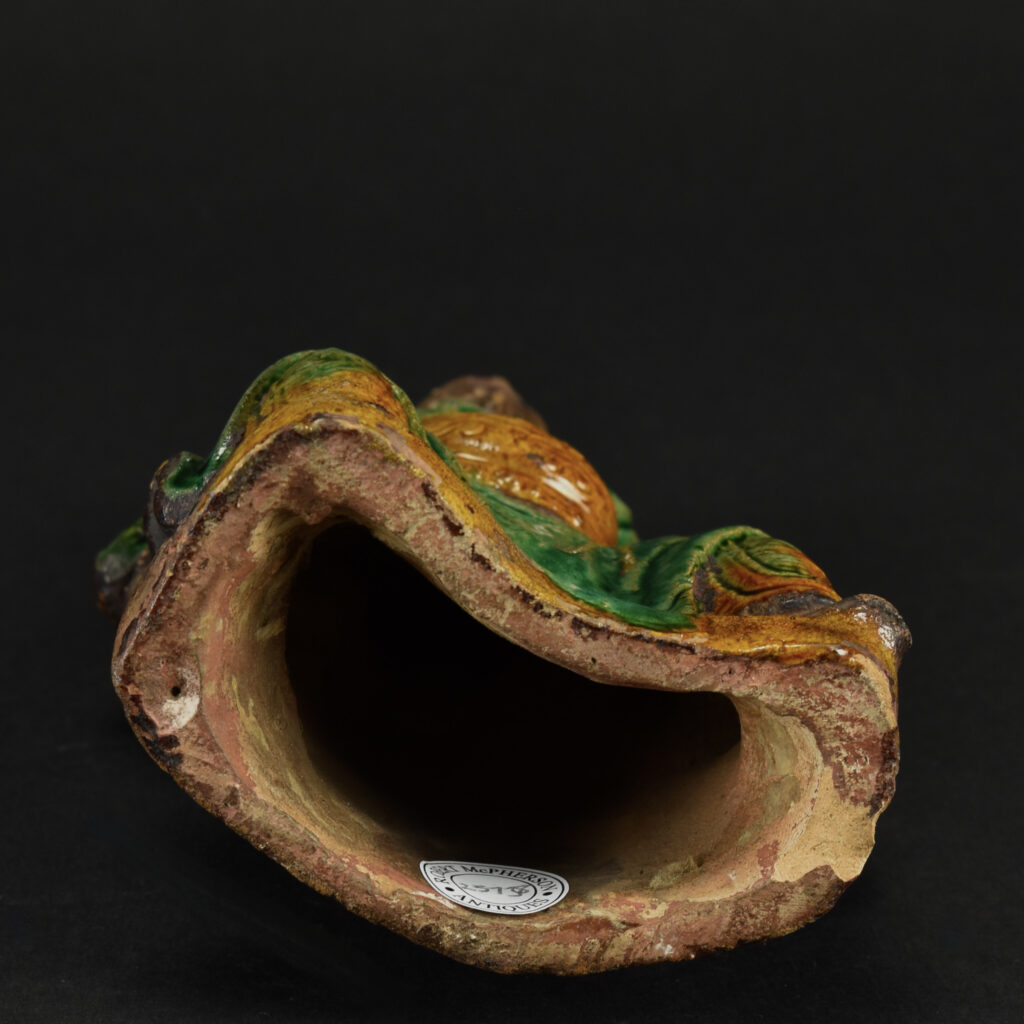
Ming Pottery Model of Guandi
A Small Ming Pottery Figure of Guandi, Jiajing (1522-1566), Longqing (1567-1572) or Wanli (1573-1620), Northern China. The moulded Ming pottery figure is decorated in lead-glazes, of ochre and green with areas of bare pottery that would have been cold-painted, there are traces of red and black on the face. This figure is crisply moulded with more detail than is usual for Ming figure of this type. Figures such as this were made for the domestic market and appeared in domestic setting, especially family shrines as well as temples. The dark tone to the unglazed area is of course the patina of centuries but it is likely that it is at least in part due to the incense used on a the altar. Guandi also called Guan Gong (Lord Guan) and Guan Di (Emperor Guan). Guan Yu (died 219), chosen name Yunchang, was a general serving under the warlord Liu Bei in the late Eastern Han Dynasty. He played a significant role in the civil war that led to the collapse of the Han Dynasty and the establishment of the state of Shu Han in the Three Kingdoms period, of which Liu Bei was the first emperor.As one of the best known Chinese historical figures throughout East Asia, Guan`s true life stories have largely given way to fictionalised ones, most of which are found in the historical novel Romance of the Three Kingdoms or passed down the generations, in which his deeds and moral qualities have been lionised. Guan is respected as an epitome of loyalty and righteousness.
SOLD
- Condition
- In excellent condition, a shallow chip to the base, very minor flake to the back.
- Size
- Height : 14.2 cm (5 1/2 inches)
- Provenance
- N/A
- Stock number
- 25738
Information
Guandi :
Guandi also called Guan Gong (Lord Guan) and Guan Di (Emperor Guan). Guan Yu (died 219), chosen name Yunchang, was a general serving under the warlord Liu Bei in the late Eastern Han Dynasty. He played a significant role in the civil war that led to the collapse of the Han Dynasty and the establishment of the state of Shu Han in the Three Kingdoms period, of which Liu Bei was the first emperor.As one of the best known Chinese historical figures throughout East Asia, Guan`s true life stories have largely given way to fictionalised ones, most of which are found in the historical novel Romance of the Three Kingdoms or passed down the generations, in which his deeds and moral qualities have been lionised. Guan is respected as an epitome of loyalty and righteousness.
Guan was deified as early as the Sui Dynasty and is still worshipped by many Chinese people today, especially in southern China, Taiwan, Hong Kong, and among many overseas Chinese communities. He is a figure in Chinese folk religion, popular Confucianism, Taoism, and Chinese Buddhism, and small shrines to Guan are almost ubiquitous in traditional Chinese shops and restaurants. He is often reverently called Guan Gong (Lord Guan) and Guan Di (Emperor Guan). His home town Yuncheng has also named its airport after him. Information from http://en.wikipedia.org/wiki/Guan_Yu
A Ming Model of Guandi :
Robert McPherson Antiques, Sold Archive - 24347.








